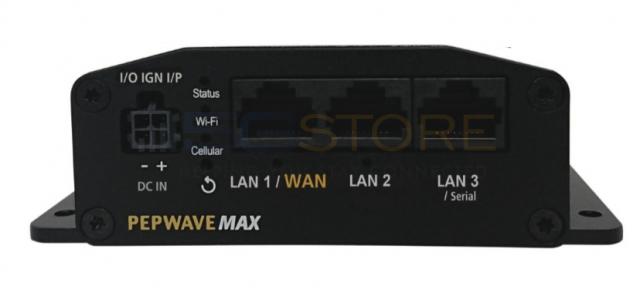
As 5G becomes available in more areas, and on more frequencies, the 3G networks are getting closer to their shutdown dates. This could be a serious problem for some companies as some services still operate over the 3G frequencies.
On February 22nd, AT&T is scheduled to be the first carrier to shut down its 3G network. T-Mobile’s shutdown will happen by July 1st.
You may recall that Verizon was originally set to shutdown 3G back in 2019. After much back and forth with the Federal Communications Commission, the U.S. regulator, they agreed to push the shutdown to this December.
Among the companies that are affected by this shutdown are vehicle connected services, home-alarm systems, and 911 alert necklaces.
The home-alarm industry has asked the FCC to delay AT&T’s network sunset until December. Per FCC Spokesperson Paloma Perez, the FCC is monitoring the 3G phase-out and working to “implement safeguards” for older phones and other devices.
WHY IS 3G BEING PHASED OUT?
3G networks were first introduced by AT&T, who ended up being the exclusive carrier for early iPhones later that decade. The networks we currently rely on for video streaming, social media apps, and others mostly use the 4G LTE network as their standard.
For the cellular providers, shutting down 3G is simply part of the upgrade process. Once these outdated networks are gone, it allows them to use the freed-up bandwidth for newer services.
AT&T says that delaying the shutdown would hurt its 5G rollout, degrading its customers’ ability to use their service and causing more dropped calls. The carrier argues that companies have had about five years to upgrade their customers’ devices. Interestingly, the carrier also says the FCC doesn’t have the authority to stop its shutdown.
WHAT’S GOING TO HAPPEN TO MY 3G PHONE?
Phones that operate solely on 3G will quit working – including for phone calls and text messaging. In those cases, users will need to upgrade to at least a 4G LTE phone.
Your cellular provider should have contacted you in some fashion about this. AT&T, for example, sent offers of free replacements via letters, emails and texts. Spokesperson Jim Greer said fewer than 1% of AT&T’s consumer devices, including phones, tablets and watches, will lose cellular service.
WHAT OTHER DEVICES ARE AFFECTED?
Everything from home fire alarms to ankle bracelets used by law enforcement and the 911 alert necklace your Grandmother may wear. It’s not certain how many outdated products are out there, or how much of an impact it could make if updates were to take place after February 22nd.
The alarm industry and other companies say they have had issues replacing devices even though they’ve known about the coming shutdown for years. Recent setbacks include both pandemic-triggered supply-chain issues and customers hesitant to let technicians into their homes because of potential health risks.
An alarm-industry lobbying group estimates that 1.5 million customers still need to upgrade their fire or burglar alarms, while about half a million have medical alert devices that run on 3G; it said most rely on AT&T service.
While a non networked fire alarm will still sound an alarm if there’s smoke, it won’t be able to contact the fire department. Likewise, burglar alarms won’t route to emergency responders if triggered.
Not all providers say there’s an issue. ADT said in November that it was on track to update its AT&T customers by February; a spokesperson declined to offer an update on Sunday.
AARP, the advocacy group for adults over 50, is also concerned that users of medical alert systems — those necklaces and bracelets, like Life Alert — that connect users to emergency call centers won’t know their gadgets don’t work anymore or won’t be able to replace them in time.
“There’s a lot of uncertainty about the impact and about how many people are affected,” said Tom Kamber, the executive director of Older Adults Technology Services, a nonprofit affiliated with AARP. The AARP has asked the FCC to delay the AT&T shutdown until December.
With regards to vehicles, some manufacturers are eliminating important safety features – such as the emergency SOS button in BMWs – after phone carriers start phasing out 3G services. Some carmakers are offering free upgrades, while Tesla and Chrysler are charging for them. Others including Hyundai, Lexa, Nissan, Toyota and BMW are sending out notices to tell drivers they will lose the features immediately. Those with OnStar, like Honda and GM, are offering software upgrades, but they are time sensitive and require action in the next week. Check out a list of the affected vehicles here.
Zonar, which provides GPS and other services for buses and trucks, says tens of thousands of vehicles will be affected. Trucks that aren’t upgraded may have to be idled if drivers can’t electronically log their hours as federal rules require. Zonar has a workaround for the trucking industry, but not all customers have placed orders for it, said Susan Corscadden, a company marketing executive.
One manufacturer of ankle bracelets for people on probation, parole or pre-trial release said it hasn’t been able to update many 3G-reliant devices. A premature shutdown could potentially allow tens of thousands of offenders like child abusers, sex offenders and drunk drivers to go unmonitored while out of prison, Alcohol Monitoring Systems wrote in an August FCC filing. The company did not respond to questions.
WHAT SHOULD I DO IF I’M AFFECTED?
Check with your cellular provider to make sure your phone will still work, or see what you need to upgrade to.
For customers that have network connected burglar alarms, fire alarms, a personal medical alert device, or a vehicle with cellular connectivity, call the companies to see if you need to update your equipment. If so, schedule an appointment before your provider’s scheduled shutdown, or see about getting a new device shipped to you.






